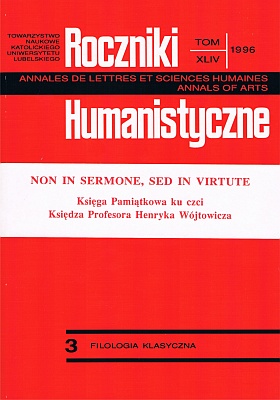"Dis amicum ... carmen". Horace's Carmen saeculare and Its Historico-Literary Context
Abstract
Horace's Carmen saeculare has been given various evaluations so far. This being so, we are made to ask about the historico-literary context in which one should interpret this work, and which entitles us to characterize and evaluate it. The fact the poet introduced into the traditional form of hymn the current political affairs turned out to be the realization of the policies advocated by Augustus' propaganda (a genealogical, military, political and legislative aspect). Its expression were ludi saeculares alone. Their idea of the return of the golden age, bound with the person of Augustus, appeared as early as Virgil's poetry. The analogical symbolism of Carmen seaculare is also confirmed by the then iconography. In the structure of the work we find a counterpart of these links. It is the employment of the superior transmitting instance from without the text (Quindecemviri) and loading the dominating in the hymn preaction with the panegyric function.
Copyright (c) 1996 Roczniki Humanistyczne

This work is licensed under a Creative Commons Attribution-NonCommercial-NoDerivatives 4.0 International License.





